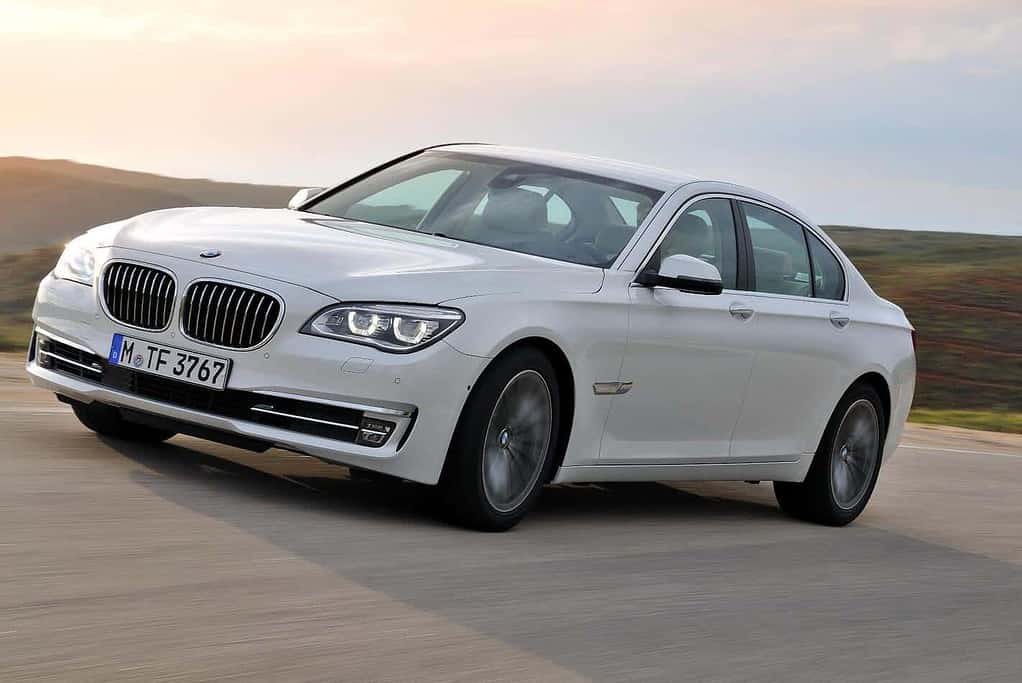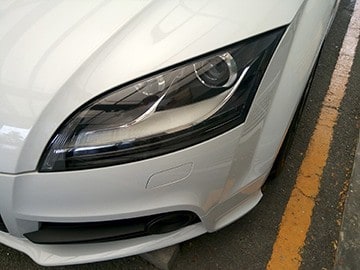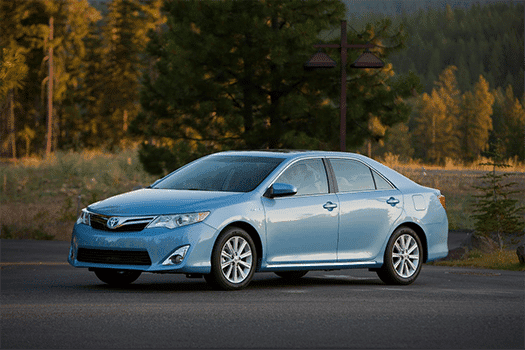Can High Mileage Cars Really be Good Value For Money?

A lot of derogatory terms sometimes get applied to vehicles with a lot of miles on them, but as they are cheaper to buy than a low mileage example, can high mileage cars really be good value for money or should you avoid them?
Buying a high-mileage car can get you great value for money, and a newer model with high miles is often better than an older used car with fewer miles. If you buy a newer car with high miles and you drive fewer miles per year than the average, in years to come your car may no longer even be considered a high mileage car anymore.
A vehicle that has covered 12,000 – 15,000 miles per year is considered average, so a two-year-old model with 28,000 miles on it isn’t a high mileage model. The same two-year-old vehicle with 40,000 miles on the odometer would be considered a high-mileage example and would therefore be more affordable than one with average or low miles.
However, if you bought that two-year-old car with 40k on the odometer and you only do 5,000 miles per year for the next three years, when your car is five years old it will only have 55,000 miles on it. The average mileage for a five-year-old car is between 60k and 75k, so the car you originally bought cheap as a high mileage car would then be considered to be a relatively low mileage example.
- How much you drive is make or break
- How old is the car you’re looking at?
- How many miles are too many miles?
- Condition reveals a lot
- Importance of service history
- Implications for financing
- Warranties
- When to walk away
- Minimizing the risk
How much you drive is make or break
Before you even consider buying a car, truck, van, or SUV with high miles on the odometer, the first thing you need to do is think about how much driving you are going to be doing in it if you do go ahead and buy a high mileage model. And I don’t just mean how many miles in a year, but how many months or years you intend to keep the vehicle.
I’ll put this right out there from the start. If you drive your vehicles very little, buying a high-mileage example can be a great idea and you can get a lot more car for your money than you would do if you were looking at something with low mileage. In fact, if you keep a high-mileage vehicle for long enough, and you don’t put a lot of additional miles on the clock while you have it, you may end up with a car with average miles for its age by the time you come to sell.
Let’s just say you buy a one-year-old car with 30,000 miles on it, but you only do 6,000 miles a year. If you keep it for three years, by the time you come to sell the car it would then have 48,000 miles on it. A four-year-old vehicle with between 48,000 and 60,000 miles is considered average, so your high-mileage purchase is now an average-mileage example. See how that works?
However, if you do 20,000 miles per year and bought a 40,000-mile vehicle you kept for three years, by the time you sell it would have 100,000 miles on the odometer. That’s seriously high miles, and it will hit the value hard and it will have started to get expensive to maintain.
How old is the car you’re looking at?
On the other hand, some people who do seriously high mileage might be right to buy a vehicle with high miles on it already as they are going to put a load more on, and it will never be anything but a high-mileage model. A reasonably young ex-demo or ex-rental car might be a good idea in those circumstances.
Basically, someone in that situation should be looking to buy a vehicle that’s as new as possible. For example, a six-month-old ex-demo with 15,000 miles would be worth considering for someone doing 20k miles per year. On the other hand, a two-year-old car with 60,000 on the odometer is going to cost a lot to maintain right from the start, and there could be reliability issues, which you really don’t want if you need to be on the road a lot.
If you are only doing a couple of thousand miles each year driving around the town or city, there’s nothing wrong with considering something like a four-year-old car with 80,000 miles on it, especially if you’re only going to be keeping it a couple of years.
The key is to make an accurate assessment of how much driving you’re really going to be doing. If you are a low-mileage user, but you’re looking to take a job in the future that will mean a lot of driving will be involved, think very carefully before pulling the trigger on a high-mileage car.
How many miles are too many miles?
You have to make a judgment based on what we’ve covered already when it comes to how many miles are too many miles on a pre-owned vehicle for you to consider it, but there’s another issue, and that’s what type, brand, and model of vehicle is it that you’re looking at?
Any vehicle that has been doing a lot of towing will have been worked much harder than a vehicle that hasn’t been towing heavy loads, so trucks and SUVs need to be considered with that in mind. Also, has the vehicle you’re looking at been doing most of its miles on long highway journeys, or has it been driven mostly around the town or city with lots of stop/start driving?
I’d suggest that a sedan that’s a couple of years old and has done 50,000 miles mostly on the highway, will be in better shape than a light-duty pickup of the same age and mileage that’s been towing close to its maximum trailer weight most of the time. It’s not an exact science, and how well either vehicle has been maintained will also come into it, but we’ll look at that here a little later on.
Condition reveals a lot
Even before you get into the service and maintenance history of a vehicle you’re looking to buy, the overall condition will tell you a lot. Even as a casual buyer and not an expert, there are some things you might notice that tell you if it’s worth continuing with your interest in a vehicle.
- Lots of stone chips on the hood – indicates a lot of highway driving
- Numerous tiny dents on the doors – a lot of time in urban areas and parking lots
- Inconsistent gaps between body panels – poor quality accident repair
- Serious dents, scratches, etc. – lack of care, which could extend to mechanicals
- Badly scuffed alloy wheels – could also be problems with wheel balance and alignment

Sometimes these issues are easy to spot, but sometimes it takes a trained eye to spot some tell-tale signs of an “interesting” past a vehicle may have had. Even though I appraised and bought hundreds of cars in my auto industry career, I have to admit, I wasn’t great at spotting paint issues that some of my colleagues spotted at a glance which meant the car should have been avoided at all cost.
It can take an expert eye to spot evidence of a poor paint repair, which could mean the vehicle had previously been in a serious accident and the repair had been done on the cheap. Of course, some overspray in itself isn’t a reason not to buy a car, but it’s what may also be wrong that you can’t see that should concern you, and dodgy paintwork can be a big warning sign of more serious neglect.
Importance of service history
The service history is always an important consideration when buying any used vehicle, but it’s particularly important if you’re considering a vehicle that’s done a lot of miles for its age. Remember, most vehicles need to be serviced every 12 months or every 12-15,000 miles, whichever comes first. You’ll be amazed at how many people think it’s every year or every 12-15,000 miles, but it isn’t.
If someone drives 30,000 miles a year in a vehicle the manufacturer specifies has a 12-month/15,000-mile service interval, the vehicle will need to have been serviced twice in that time. So, if you view a two-year-old car that has 60,000 miles on the clock and it’s only had two services carried out, then walk away.
Likewise, if a car has a few more miles on the clock than you’d like, but it has stellar main-dealer service history, it could be a better buy than a similar vehicle with fewer miles and a patchy history. That’s because the main dealer history proves a lot of essential replacement of wear and tear components will have been carried out, and preventative maintenance is a very good thing for the long life of any vehicle.

Implications for financing
If you are going to be financing your vehicle purchase with auto finance, high mileage can restrict the finance options available to you. It depends on the lender, the vehicle, its age, and the number of miles it’s done, but you might not be able to take the finance out over as long a period as you’d like, the rate might be high, and in some cases, you may not be able to finance the vehicle at all.
All of that can be avoided by going for a personal loan that isn’t secured on the car, but that’s entirely up to you, and there are other issues with using personal loans to buy a vehicle that I’ll cover in another article.
Warranties
If you’re the sort of buyer who likes the comfort of a vehicle with a comprehensive warranty, a high mileage example might not be the right option. You can pretty much get a warranty for any vehicle if you look hard enough, but the older the vehicle and the more miles it’s done, the more expensive the warranty and the less it will cover.
There are a lot of things that can be expensive to fix that will be covered by a warranty early in a vehicle’s life that won’t be covered further down the line. Every warranty and provider will be different, but don’t expect anything other than the most fundamental mechanical faults to be covered if you get a warranty on a vehicle with more than 100,000 miles. Would a blown head gasket be covered? Well, maybe. How about something like a faulty infotainment system? Most of the time, forget it.
When to walk away
If you view a high-mileage used vehicle and something bothers you about it, and you’re not an expert or have an expert with you, then walk away. Whichever way you look at it, a high-mileage vehicle is a risk. Even if you take measures to minimize that risk, which you can, it is still a risk at the end of the day. The older the car and the more miles it has on the clock, the greater the risk. Even if everything we’ve mentioned so far suggests you’re looking at a good one, it is still a risk.
It can be very tempting, especially if you’re looking at a luxury model you wouldn’t be able to afford if it was newer and had fewer miles on the clock, but always be on the cautious side. If a price looks too good to be true, it probably is, and for good reason. And remember, even though something like a 10-year-old BMW 7 Series can cost half the price of a brand new compact hatch, it still costs BMW 7 Series money to maintain. Trust me; that bargain price won’t look like too much of a bargain when you have to pay out for a new front suspension.

Minimizing the risk
I’ve already covered some of the things to look out for that can be tell-tale signs that all’s not well with a high-mileage car for sale, but there is a way you can minimize the risk, which is to pay for a vehicle inspection to be carried out for you before you buy. Even if you don’t actually pay for one to be carried out, asking the seller if they mind you getting one done will at least weed out the rotten apples if they decline to allow it.
One of the biggest organizations that offer this kind of service is AAA. For just $89,95 a participating AAA Approved Auto Repair facility will check over a vehicle to make sure it doesn’t have any hidden issues. If you’re an existing AAA member, you can even get a 50% rebate on your next used vehicle inspection.
If you research what to look out for and consider when buying a pre-owned vehicle, everything that applies to relatively new, low-mileage cars also applies to high-mileage examples. The difference is there’s a lot more to take into consideration with high mileage vehicles, and there’s a lot more risk involved. A high-mileage car can be a great deal for you, especially if you don’t do a lot of miles yourself, but you really need to go into it with your eyes wide open.

